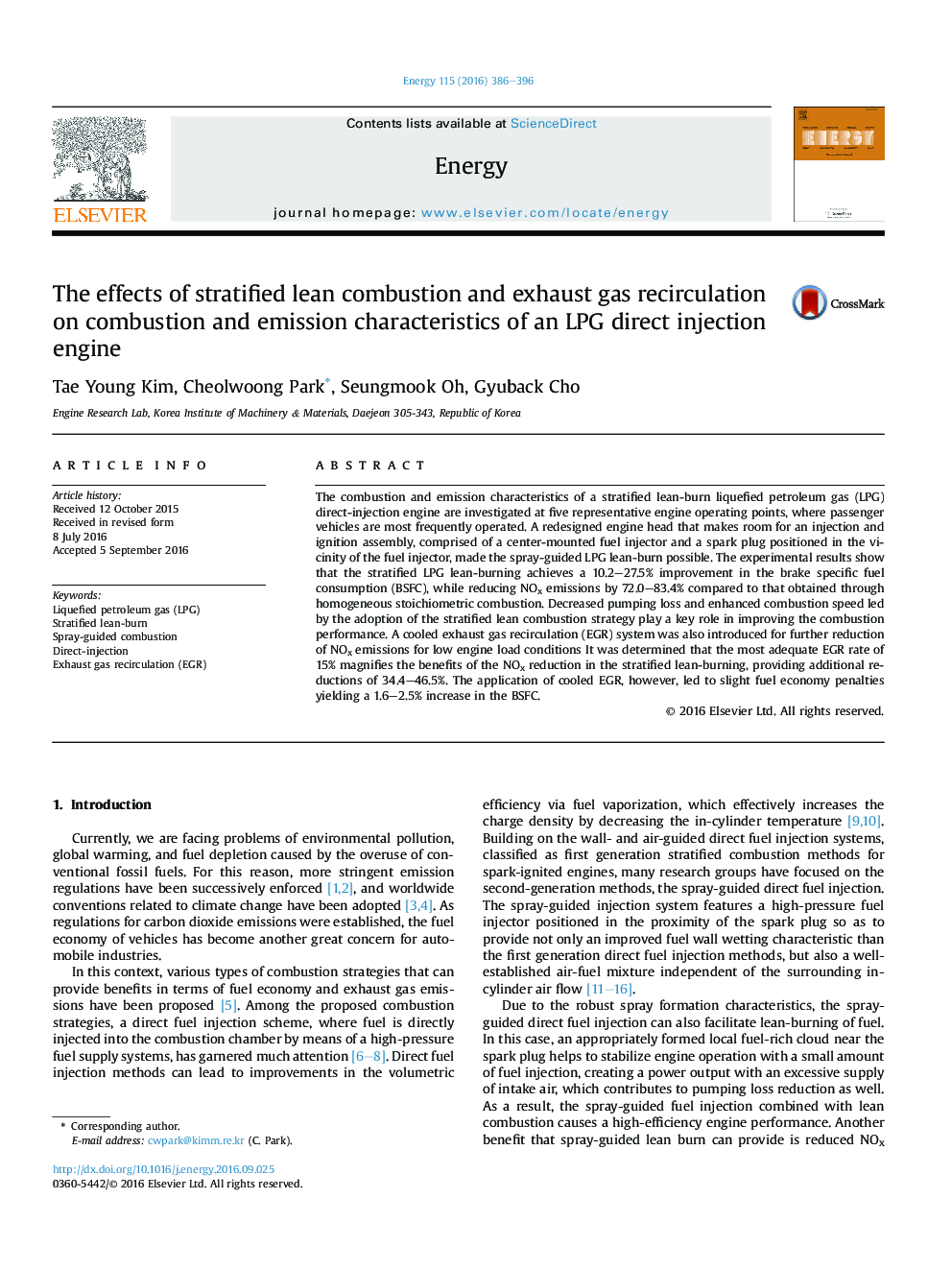| Article ID | Journal | Published Year | Pages | File Type |
|---|---|---|---|---|
| 5476681 | Energy | 2016 | 11 Pages |
Abstract
The combustion and emission characteristics of a stratified lean-burn liquefied petroleum gas (LPG) direct-injection engine are investigated at five representative engine operating points, where passenger vehicles are most frequently operated. A redesigned engine head that makes room for an injection and ignition assembly, comprised of a center-mounted fuel injector and a spark plug positioned in the vicinity of the fuel injector, made the spray-guided LPG lean-burn possible. The experimental results show that the stratified LPG lean-burning achieves a 10.2-27.5% improvement in the brake specific fuel consumption (BSFC), while reducing NOx emissions by 72.0-83.4% compared to that obtained through homogeneous stoichiometric combustion. Decreased pumping loss and enhanced combustion speed led by the adoption of the stratified lean combustion strategy play a key role in improving the combustion performance. A cooled exhaust gas recirculation (EGR) system was also introduced for further reduction of NOx emissions for low engine load conditions It was determined that the most adequate EGR rate of 15% magnifies the benefits of the NOx reduction in the stratified lean-burning, providing additional reductions of 34.4-46.5%. The application of cooled EGR, however, led to slight fuel economy penalties yielding a 1.6-2.5% increase in the BSFC.
Related Topics
Physical Sciences and Engineering
Energy
Energy (General)
Authors
Tae Young Kim, Cheolwoong Park, Seungmook Oh, Gyuback Cho,
